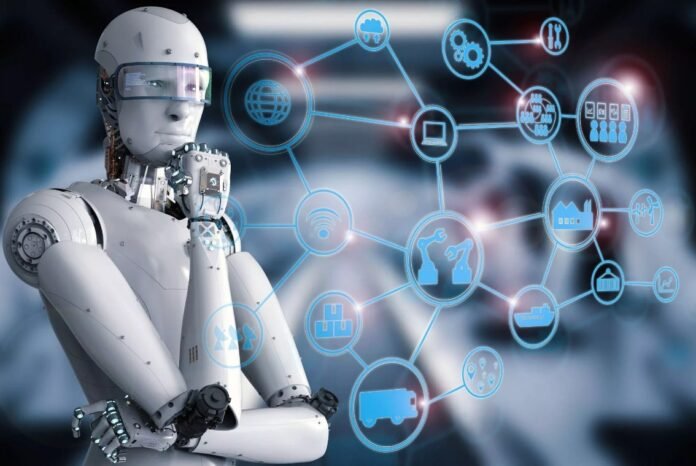Big data has become a buzzword in recent years. With the rise of the internet, social media, and the internet of things (IoT), there is a vast amount of data being generated every second. This data can be analyzed to extract insights that can be used to improve business operations, develop new products and services, and solve complex problems. Machine learning is a powerful tool for analyzing big data, and it is revolutionizing industries in many ways.
In this article, we will explore the basics of machine learning, its applications in various industries, and the challenges that need to be overcome to unlock its full potential.
What is Machine Learning?
Machine learning is a subfield of artificial intelligence (AI) that focuses on the development of algorithms that can learn from data. The goal of machine learning is to develop algorithms that can automatically improve their performance based on experience. Machine learning algorithms can be divided into three categories: supervised learning, unsupervised learning, and reinforcement learning.
Supervised learning is a type of machine learning where the algorithm is trained on labeled data. The algorithm learns to map input data to output data based on examples provided by a human expert. Supervised learning is commonly used in image recognition, speech recognition, and natural language processing.
Unsupervised learning is a type of machine learning where the algorithm learns to identify patterns in the data without any human intervention. Unsupervised learning is commonly used in clustering and dimensionality reduction.
Reinforcement learning is a type of machine learning where the algorithm learns to make decisions based on feedback from the environment. Reinforcement learning is commonly used in game playing and robotics.
Applications of Machine Learning
Machine learning has the potential to revolutionize many industries, from healthcare and finance to retail and transportation. Here are some of the applications of machine learning:
- Healthcare: Machine learning can be used to analyze medical images, such as MRI and CT scans, to detect abnormalities and diagnose diseases. Machine learning can also be used to develop personalized treatment plans based on a patient’s medical history and genetic profile.
- Finance: Machine learning can be used to analyze financial data, such as stock prices and economic indicators, to predict future trends and make investment decisions. Machine learning can also be used to detect fraud and identify patterns of suspicious behavior.
- Retail: Machine learning can be used to analyze customer data, such as purchase history and browsing behavior, to personalize marketing campaigns and improve customer engagement. Machine learning can also be used to optimize supply chain operations and inventory management.
- Transportation: Machine learning can be used to analyze traffic patterns and optimize routes to reduce congestion and improve efficiency. Machine learning can also be used to develop autonomous vehicles that can navigate safely and efficiently.
Challenges
While machine learning has tremendous potential, there are several challenges that need to be overcome to unlock its full potential. Here are some of the challenges facing machine learning:
- Data Quality: Machine learning algorithms rely on high-quality data to make accurate predictions. However, data quality can be a significant challenge, particularly when dealing with unstructured data, such as text and images. Data needs to be cleaned and preprocessed before it can be used for machine learning, and this can be a time-consuming and expensive process.
- Interpretability: Machine learning algorithms can be very complex, and it can be difficult to understand how they make their predictions. This is particularly important in applications such as healthcare, where decisions made by machine learning algorithms can have a significant impact on people’s lives. Researchers are exploring ways to make machine learning algorithms more interpretable, but there is still much work to be done.
- Bias: Machine learning algorithms can be biased, particularly when the training data is biased. This can lead to unfair and discriminatory outcomes, particularly in applications such as hiring and lending. Researchers are exploring waysto mitigate bias in machine learning algorithms, such as using diverse training data and developing fairness metrics.
- Scalability: Machine learning algorithms can be computationally intensive, particularly when dealing with large datasets. As the amount of data being generated continues to grow, scalability will become an increasingly important challenge for machine learning.
- Privacy and Security: Machine learning algorithms can be vulnerable to attacks, such as adversarial attacks, where an attacker deliberately tries to fool the algorithm. Machine learning algorithms can also raise privacy concerns, particularly when dealing with sensitive data, such as medical records.
Conclusion
Machine learning is a powerful tool for analyzing big data, and it is revolutionizing industries in many ways. Machine learning algorithms can be used to make predictions and decisions based on data, and they can learn from experience to improve their performance over time. Machine learning has the potential to revolutionize many industries, from healthcare and finance to retail and transportation. However, there are several challenges that need to be overcome to unlock its full potential. Researchers are exploring ways to improve data quality, interpretability, mitigate bias, scalability, privacy, and security in machine learning algorithms. While machine learning is still in its infancy, it has the potential to change the world in ways that we can’t even imagine.
Google News | Telegram
















